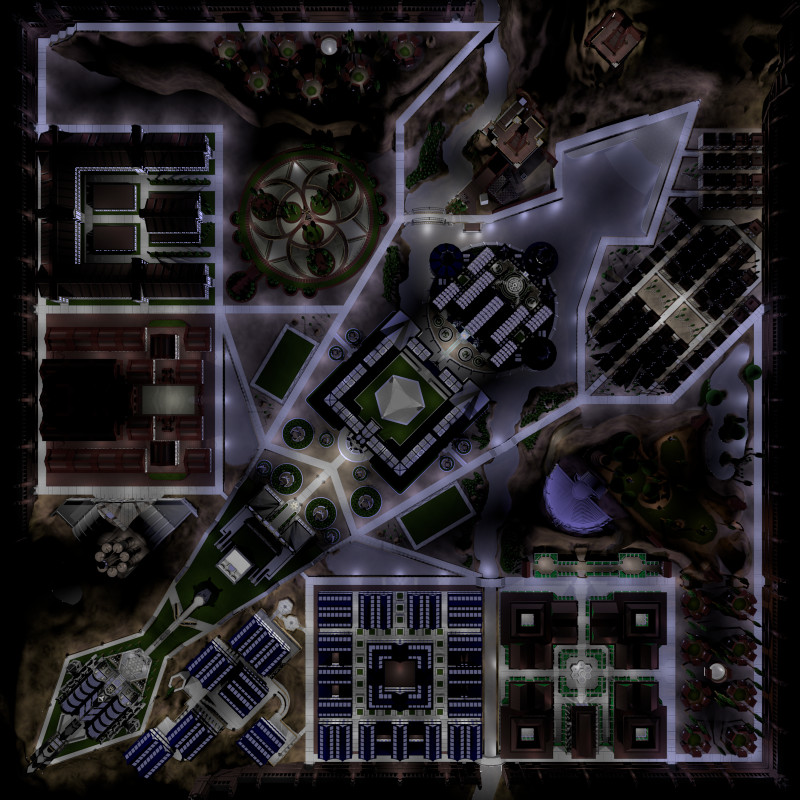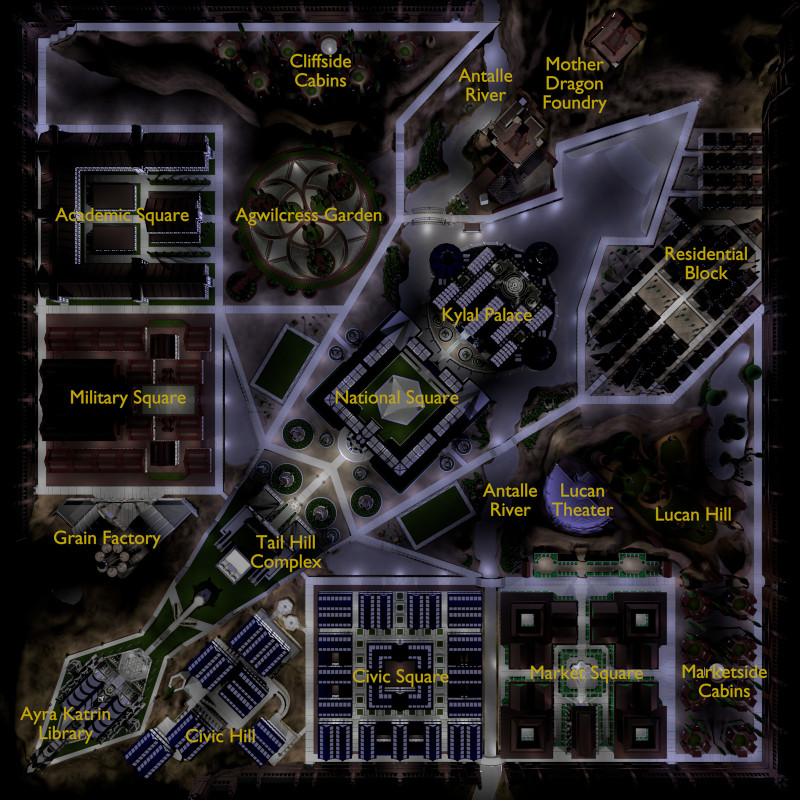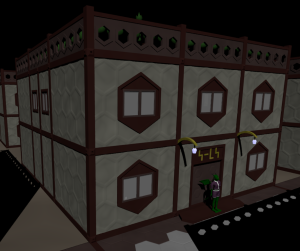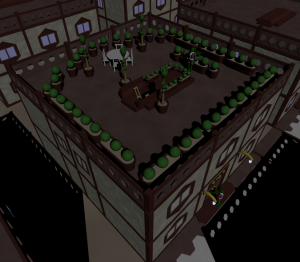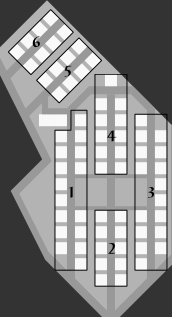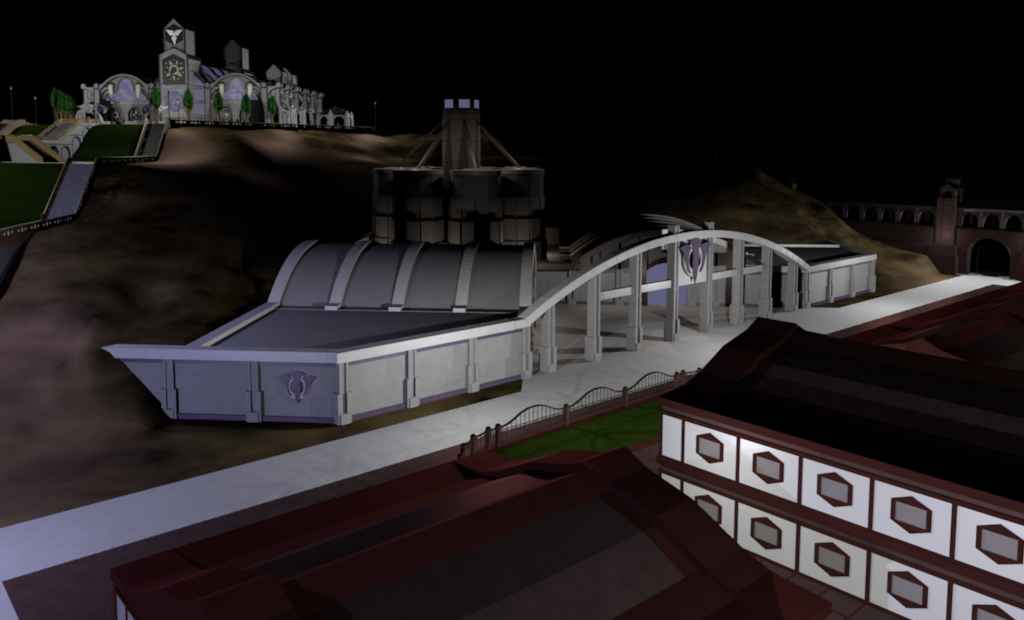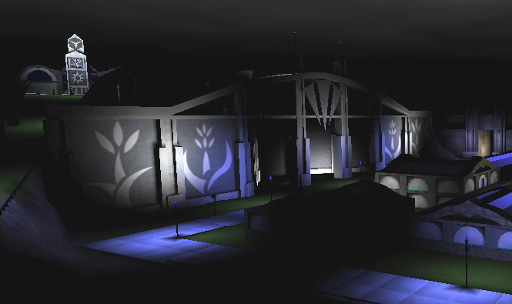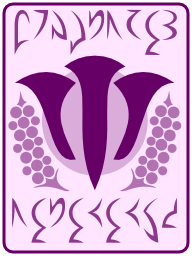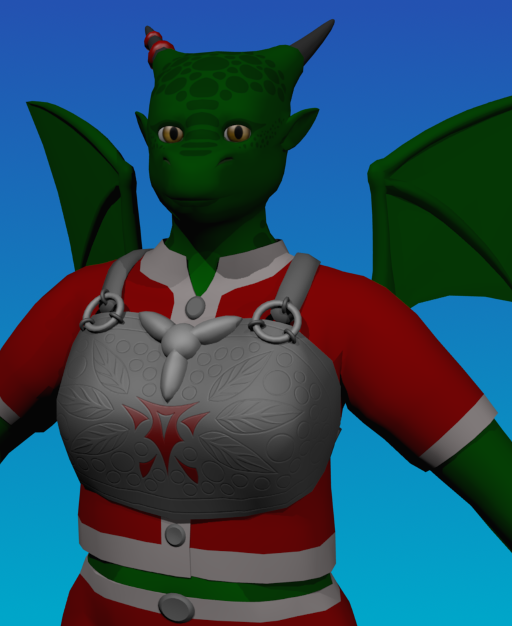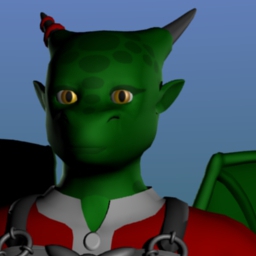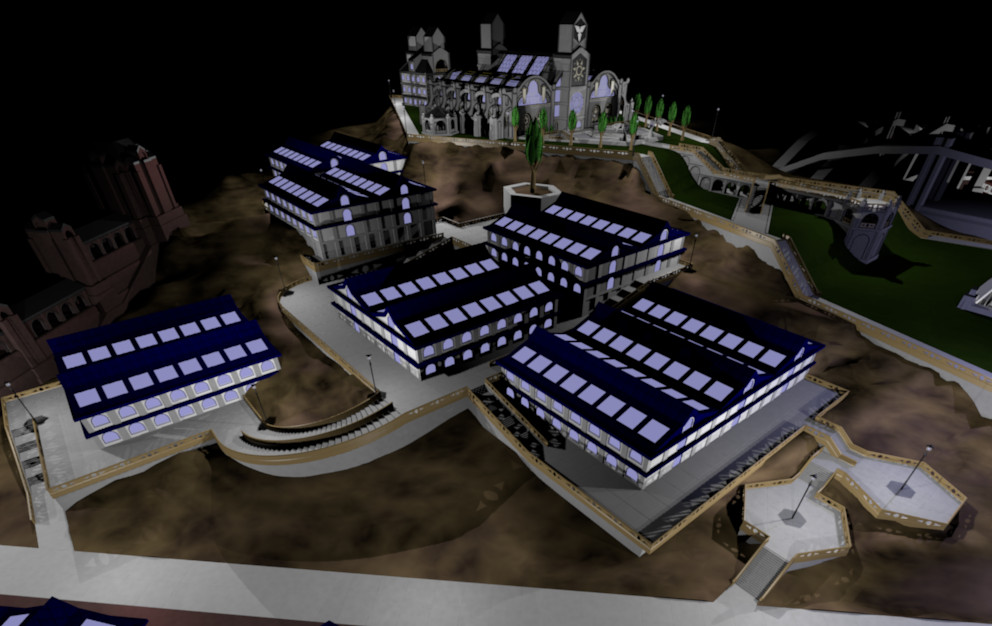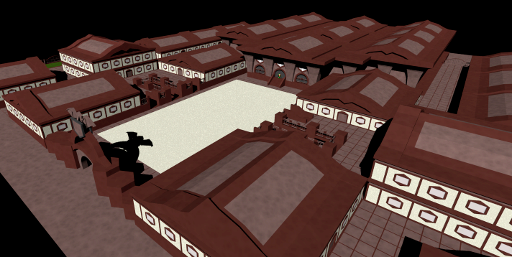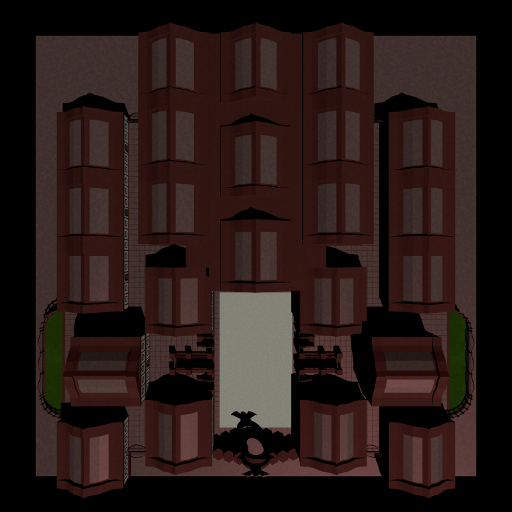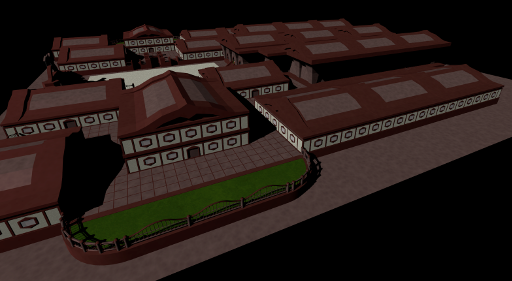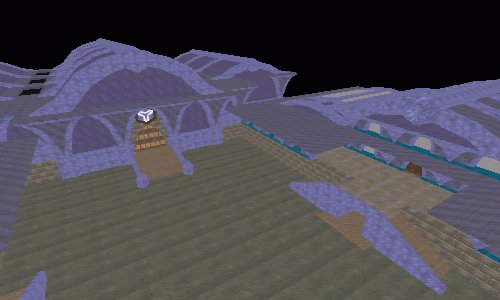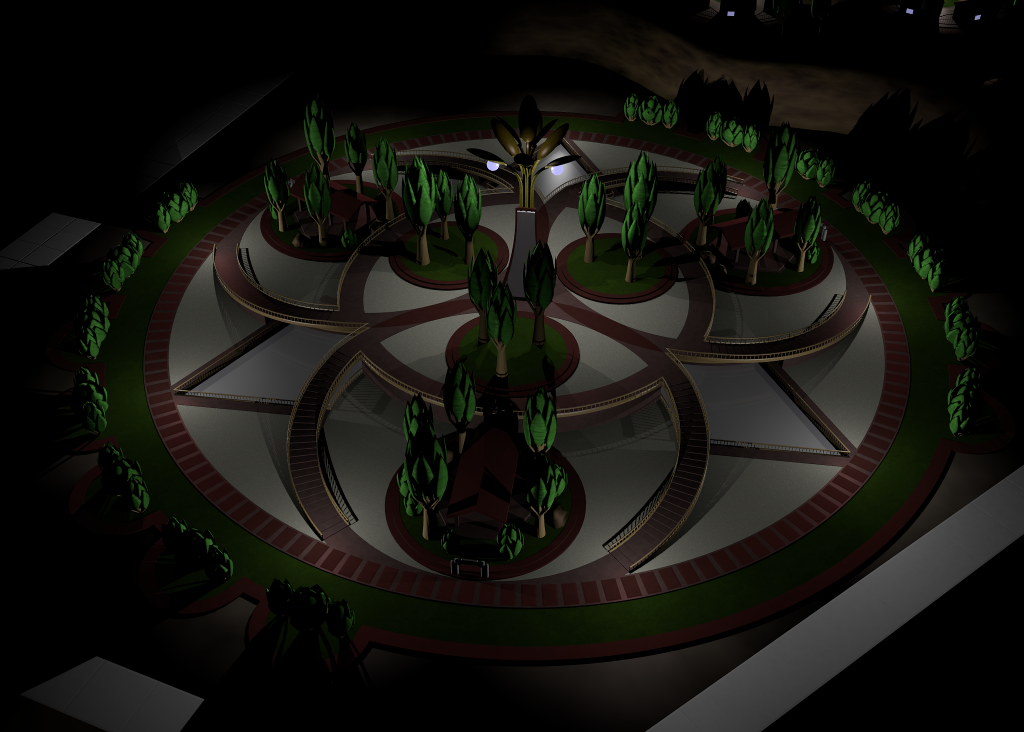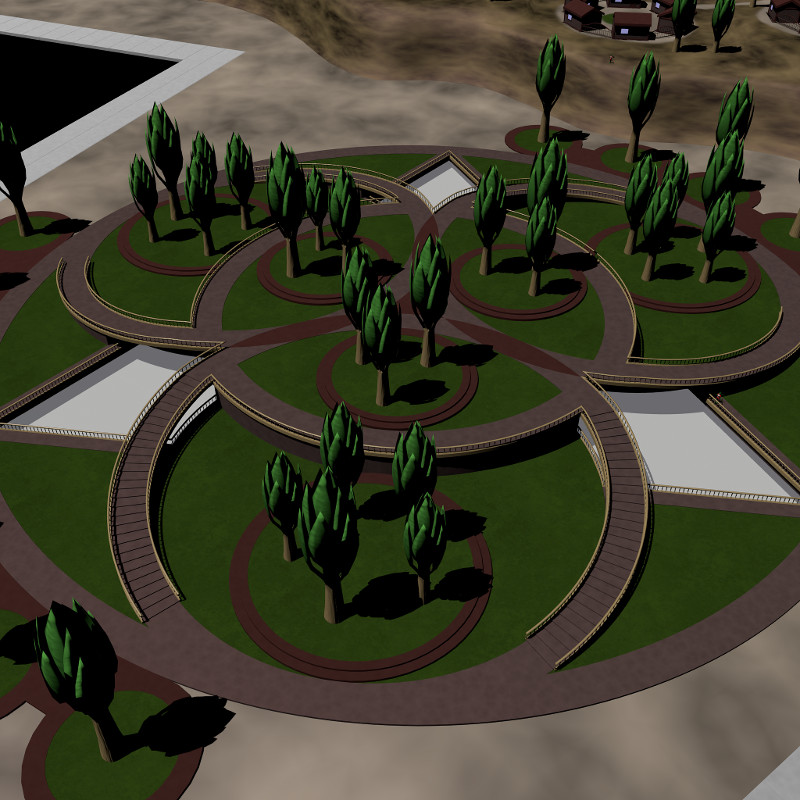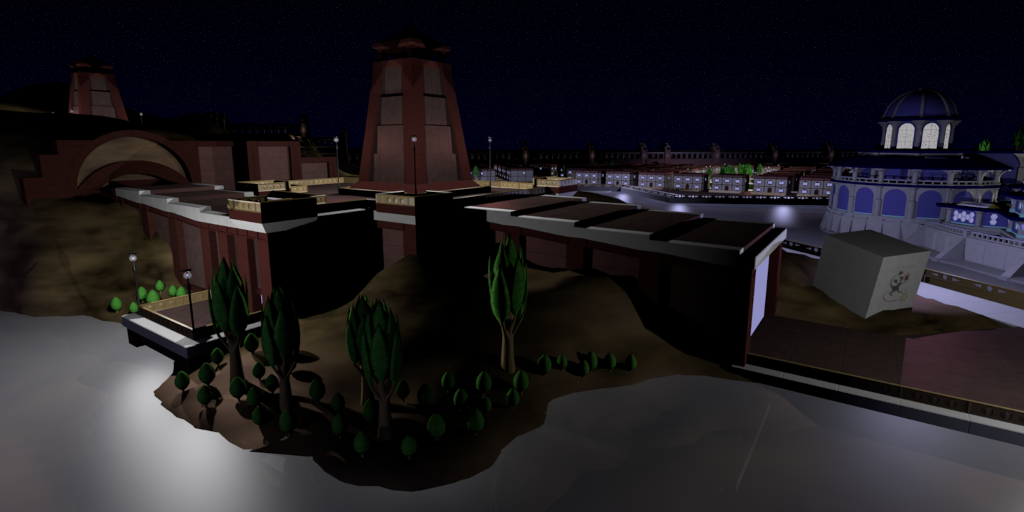
Located on the north hill of Agwilcress, the Mother Dragon Foundry (che ya-keen ag-wil bak-e-tone) is the prime facility of the Ayra Katrin Engineers. Its two large furnaces are used to forge metal and the product known as stormstone, the chief construction material used in the Agwilikan and Akelikan cities.
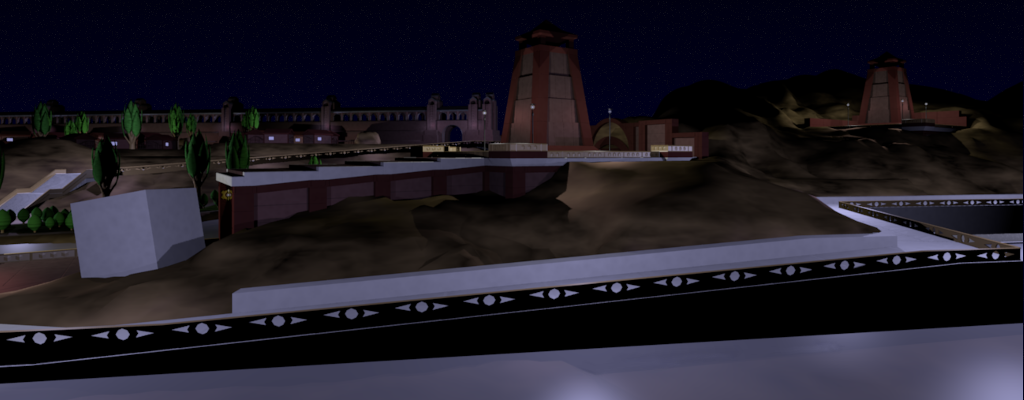
The foundry got its name because it produced almost all of the metal and stormstone that makes up the buildings and infrastucture of Agwilcress (which translates literally to Dragon City), so it came to be thought of as the city’s mother. The molds used to make stormstone pieces even picked up the nickname “eggshells”.
Recently the foundry expanded and added a second furnace higher up on the hill. The two furnaces are connected by a ramped tunnel, which in itself was an over-the-top engineering feat. The tunnel’s lower entrance is located under the arch seen on the left side of the first image.
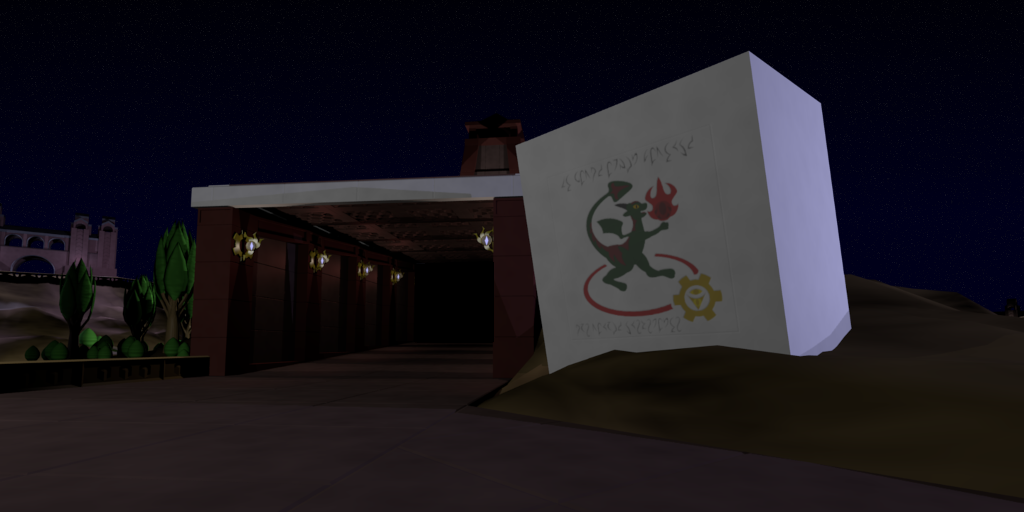
“The Cube” is located at the foundry entrance, which was created as a test of the furnace’s maximum capacity. After its forging, the engineers weren’t sure where to put the monstrosity. They ultimately wound up dumping it off to the side of the entrance. An artist was commissioned to turn it into the foundry’s official sign. The sign depicts Salmandano, the legendary Prerart that was immune to fire, who also happens to be the foundry’s mascot. It also bears the insigia of the engineers and the words “The Mother Dragon Foundry / Ayra Katrin Engineers”.
The Agwil-Naryn word for engineer is “Otamajale”, which essentially means “machines master”.
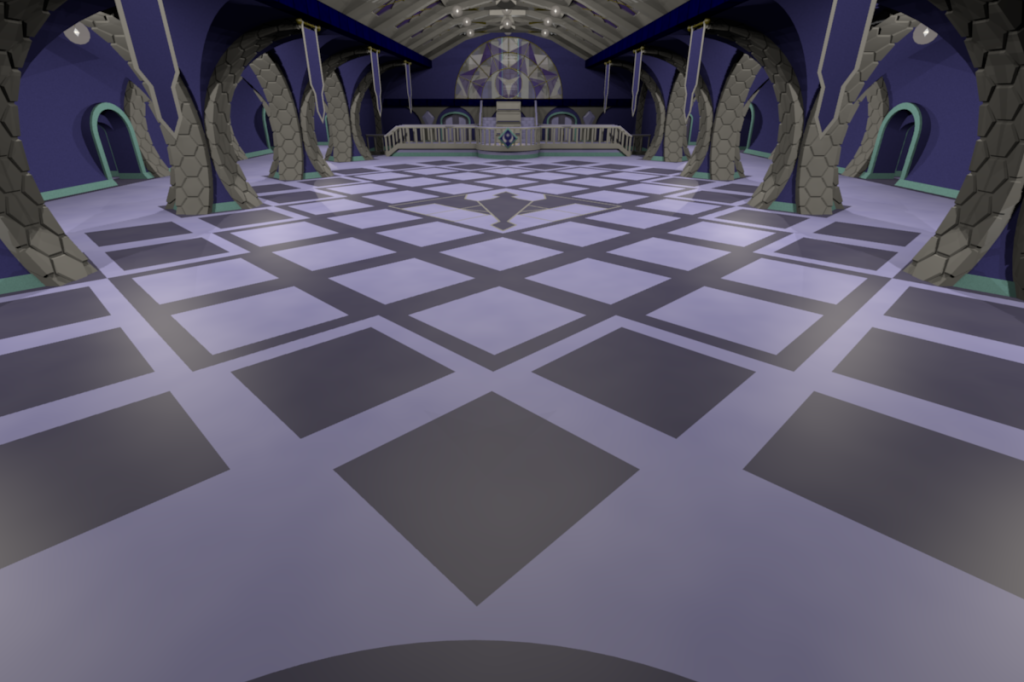 A new design for the Ceremony Hall floor. At the center is an outline of Agwilcress.
A new design for the Ceremony Hall floor. At the center is an outline of Agwilcress.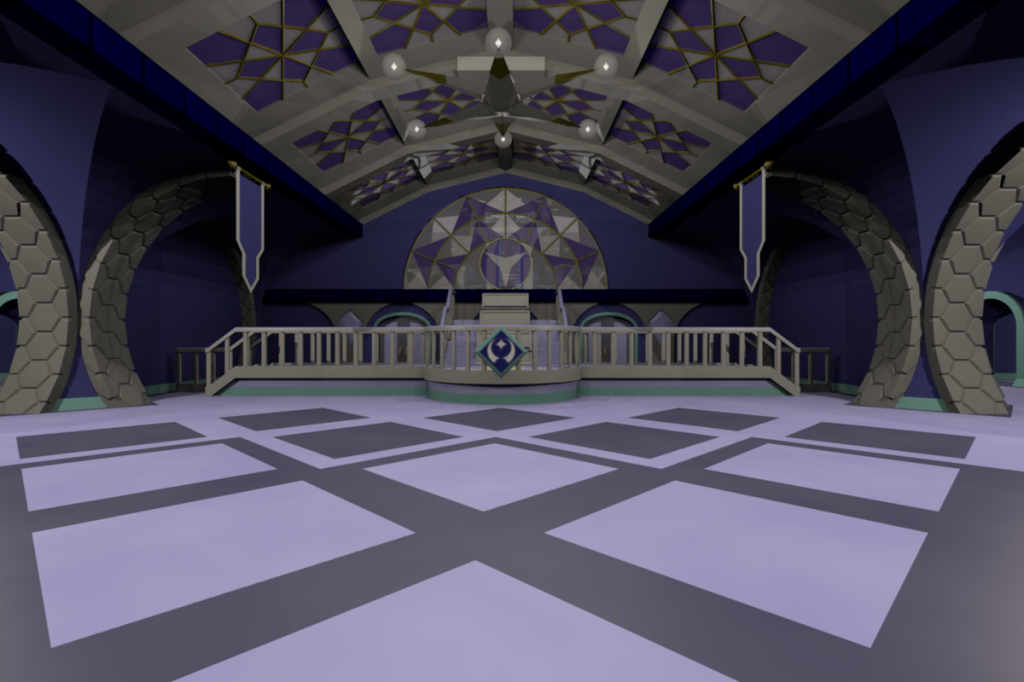 The back of the Ceremony Hall now has a dais which includes tiered seats behind the speaking stage. New chandeliers, made out of pairs of three-stars, now hang from the centerline of the roof.
The back of the Ceremony Hall now has a dais which includes tiered seats behind the speaking stage. New chandeliers, made out of pairs of three-stars, now hang from the centerline of the roof.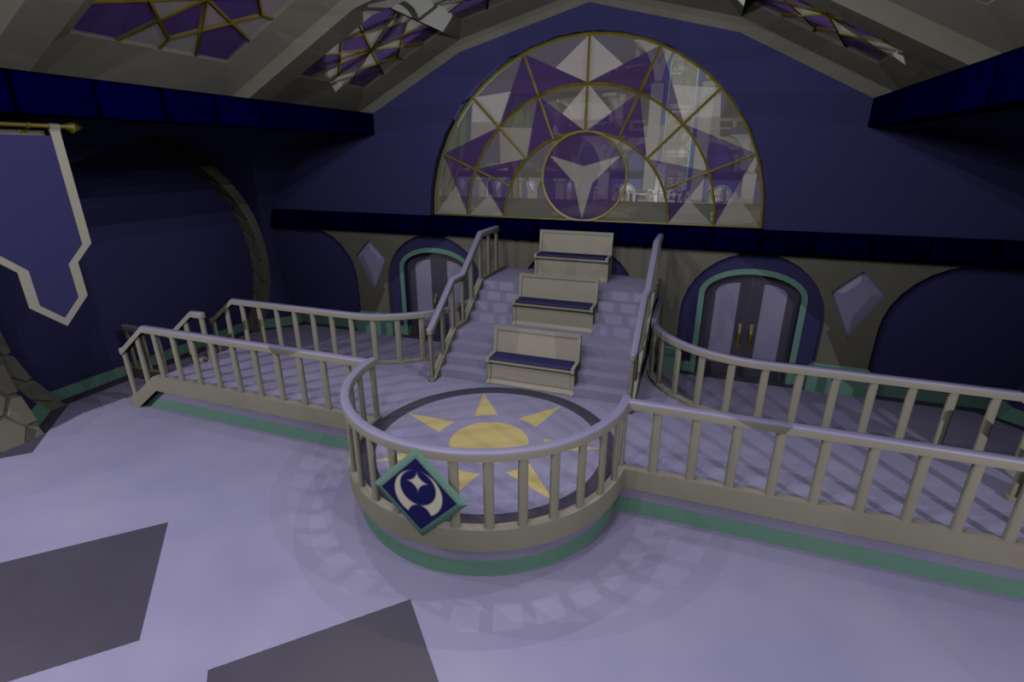 Another view of the dais. Here you can see the seven-star decoration similar to the one at the front entrance, and a better look at the seats.
Another view of the dais. Here you can see the seven-star decoration similar to the one at the front entrance, and a better look at the seats. An overhead view of the palace in its current state. Recently some circular garden beds and fountains were added to the front yard.
An overhead view of the palace in its current state. Recently some circular garden beds and fountains were added to the front yard.
